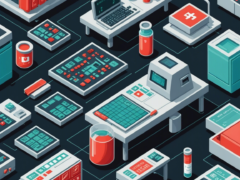
Accreditation and its Impact on Cord Blood Banking Costs
Here is the article on “Accreditation and its Impact on Cord Blood Banking Costs” with the requested formatting:
The Crucial Role of Accreditation in Cord Blood Banking Costs
Cord blood banking has emerged as a valuable option for families seeking to preserve their newborn’s potentially life-saving stem cells. However, the cost of cord blood banking can be a significant factor for many families. One of the key elements that can impact the cost of cord blood banking is the accreditation status of the cord blood bank.
Understanding Cord Blood Bank Accreditation
Accreditation is a process by which a cord blood bank undergoes rigorous evaluation and assessment to ensure that it meets or exceeds industry standards for quality, safety, and operational procedures. The most widely recognized accreditation for cord blood banks is the AABB (formerly the American Association of Blood Banks) accreditation.
AABB accreditation requires cord blood banks to demonstrate compliance with strict guidelines covering areas such as donor recruitment, sample collection, processing, testing, storage, and distribution. This comprehensive evaluation helps to ensure that the cord blood units stored by the bank are of the highest quality and meet the necessary standards for potential medical use.
The Impact of Accreditation on Cord Blood Banking Costs
The accreditation process for cord blood banks can have a significant impact on the overall cost of the service. Here are some of the key ways in which accreditation influences cord blood banking costs:
Operational Expenses
Maintaining AABB accreditation requires cord blood banks to invest in specialized equipment, facilities, and staff training to meet the rigorous standards. These operational expenses can contribute to higher overall costs for the bank, which may be passed on to consumers in the form of higher enrollment and storage fees.
Quality Assurance and Testing
AABB-accredited cord blood banks must adhere to strict protocols for sample collection, processing, and testing. This includes comprehensive testing for infectious diseases, genetic markers, and other quality indicators. The costs associated with these stringent quality assurance measures can add to the overall expenses of the cord blood banking service.
Regulatory Compliance
Cord blood banks must comply with various regulatory requirements, both at the state and federal level. Maintaining compliance with these regulations, which can include regular inspections and audits, can also contribute to the operational costs of an accredited cord blood bank.
Reputation and Reliability
AABB accreditation is widely recognized as the gold standard in the cord blood banking industry. Families who choose an accredited bank can have confidence in the quality and reliability of the service, which may justify a slightly higher cost compared to non-accredited banks.
Balancing Cost and Quality in Cord Blood Banking
While the accreditation process can lead to higher costs for cord blood banking, it is important for families to consider the long-term value and potential benefits of choosing an AABB-accredited provider. The enhanced quality assurance, safety, and reliability of an accredited cord blood bank can provide peace of mind and better ensure the viability of the stored stem cells for potential medical use in the future.
Ultimately, the decision to enroll in cord blood banking should be based on a careful evaluation of the available options, including the accreditation status and associated costs. By understanding the role of accreditation in cord blood banking, families can make an informed decision that aligns with their personal priorities and budget.
Regulatory Oversight and Its Role in Cord Blood Banking Pricing
The Impact of Regulatory Oversight on Cord Blood Banking Pricing
Cord blood banking has become an increasingly important aspect of modern healthcare, providing a valuable source of stem cells for various medical treatments. However, the cost of cord blood banking services can be a significant barrier for many families. One factor that plays a crucial role in shaping the pricing of cord blood banking is the regulatory oversight and accreditation processes involved.
The Importance of Regulatory Oversight
Regulatory oversight in the cord blood banking industry serves several critical functions. First and foremost, it ensures the safety and quality of the stored cord blood samples. Governing bodies, such as the FDA (Food and Drug Administration) and AABB (American Association of Blood Banks), establish stringent guidelines and standards that cord blood banks must adhere to. This includes procedures for collection, processing, testing, and storage of the cord blood units.
By adhering to these regulations, cord blood banks can demonstrate the integrity and reliability of their services, which in turn, builds trust and confidence among potential customers. Regulatory oversight also helps to prevent fraudulent or unethical practices, ensuring that families receive the level of service and care they expect when investing in cord blood banking.
The Impact of Accreditation on Pricing
One of the key factors that affects the pricing of cord blood banking services is the level of accreditation held by the cord blood bank. Accreditation is a voluntary process in which a cord blood bank undergoes a comprehensive evaluation to ensure it meets or exceeds the industry’s highest standards.
Cord blood banks that have achieved accreditation, such as AABB or NetCord-FACTA accreditation, often charge higher prices compared to non-accredited banks. This is because the accreditation process involves significant investments in infrastructure, personnel training, quality control measures, and ongoing compliance monitoring.
Accredited cord blood banks must allocate resources to maintain their accredited status, which can include regular audits, staff development, and the implementation of advanced technologies. These additional costs are often passed on to the consumer, resulting in higher prices for cord blood banking services.
The Trade-off Between Cost and Quality
While the higher prices associated with accredited cord blood banks may be a concern for some families, it is important to recognize the value that these services provide. Accredited banks offer a higher level of quality assurance, ensuring that the stored cord blood samples meet the most stringent safety and efficacy standards.
In contrast, non-accredited cord blood banks may offer lower-cost options, but there is a higher risk of variability in the quality and reliability of their services. Families must weigh the financial considerations against the importance of having a trusted, high-quality cord blood banking provider.
When considering cord blood banking, it is crucial for families to research and compare the options available. This includes understanding the accreditation status of the cord blood banks, as well as the specific services and pricing structures they offer.
By making an informed decision based on both cost and quality factors, families can ensure that they are investing in a cord blood banking service that aligns with their needs and provides the best possible protection for their child’s future health.
Advancements in Cord Blood Storage and Their Influence on Affordability
The Evolving Landscape of Cord Blood Banking: Balancing Affordability and Accessibility
Cord blood banking has witnessed remarkable advancements in recent years, with innovations in storage and preservation techniques significantly influencing the affordability of this valuable medical resource. As the demand for cord blood stem cells continues to grow, understanding the impact of these technological advancements on the cost of cord blood banking is crucial.
Cryogenic Storage: Optimizing Preservation and Reducing Costs
One of the primary drivers behind the increased affordability of cord blood banking is the advancement in cryogenic storage techniques. Cryogenic storage, the process of preserving biological samples at ultra-low temperatures, has evolved to provide more efficient and cost-effective solutions for cord blood banks. The implementation of advanced freezing and thawing protocols, as well as the use of automated storage systems, has reduced the operational costs associated with maintaining cord blood samples. This, in turn, has allowed cord blood banks to offer more affordable options to families interested in preserving their child’s cord blood.
Automation and Streamlined Processing
The incorporation of automation and streamlined processing methods has also played a significant role in enhancing the affordability of cord blood banking. Automated processing systems have been developed to handle the collection, testing, and storage of cord blood samples, reducing the need for manual labor and the associated costs. These advancements have led to increased efficiency, improved accuracy, and a reduction in the overall operational expenses of cord blood banks. As a result, families can now access cord blood banking services at more affordable rates.
Economies of Scale and Increased Competition
As the cord blood banking industry has matured, the emergence of a more competitive market has also contributed to the improved affordability of these services. Larger cord blood banks, benefiting from economies of scale, have been able to offer more competitive pricing to families. Additionally, the entrance of new players in the market has driven innovation and encouraged existing providers to optimize their pricing structures, ultimately benefiting the end-users.
Governmental Policies and Regulatory Changes
Governmental policies and regulatory changes have also played a role in shaping the affordability of cord blood banking. In some regions, the introduction of government-funded or subsidized cord blood banking programs has made these services more accessible to a wider population. Additionally, the harmonization of regulations and the establishment of industry standards have helped to streamline the cord blood banking process, leading to cost savings that can be passed on to consumers.
Increased Awareness and Acceptance
The growing awareness and acceptance of the medical benefits of cord blood stem cells have also contributed to the increased affordability of cord blood banking. As more families become informed about the potential applications of cord blood, the demand for these services has risen, allowing cord blood banks to achieve greater economies of scale and pass on the cost savings to their customers.
The advancements in cord blood storage techniques, the implementation of automation and streamlined processing, the emergence of a more competitive market, and the impact of governmental policies and increased awareness have all played a significant role in enhancing the affordability of cord blood banking. As these trends continue to evolve, it is likely that cord blood banking will become an increasingly accessible and cost-effective option for families seeking to preserve this valuable medical resource.
Cord Blood Banking Industry Trends and Emerging Pricing Dynamics
The cord blood banking industry has witnessed a remarkable transformation in recent years, with emerging trends and shifting pricing dynamics significantly impacting the landscape. As this niche market continues to evolve, understanding the factors that influence the cost of cord blood banking has become increasingly crucial for expectant parents and industry stakeholders alike.
The Impact of Accreditation on Cord Blood Banking Costs
One of the key factors affecting the cost of cord blood banking is the role of accreditation. Accreditation, a rigorous process undertaken by cord blood banks to ensure compliance with industry standards and best practices, can have a substantial impact on the overall pricing. Banks that have achieved accreditation from reputable organizations, such as the American Association of Blood Banks (AABB) or the Foundation for the Accreditation of Cellular Therapy (FACT), often charge higher fees due to the additional costs associated with maintaining these high-quality standards.
However, the investment in accreditation can also provide long-term benefits for both cord blood banks and their clients. Accredited banks are typically seen as more trustworthy and reliable, offering parents the assurance that their child’s cord blood is being stored in a secure and well-regulated environment. This, in turn, can lead to increased demand and potentially higher retention rates, justifying the higher initial costs.
Emerging Pricing Models and Strategies
As the cord blood banking industry matures, we are witnessing the emergence of various pricing models and strategies. Some banks have adopted a tiered pricing structure, offering different service levels and corresponding costs to cater to a wider range of budgets and preferences. This approach allows parents to choose the level of service that best fits their needs and financial constraints.
Additionally, some cord blood banks are exploring innovative pricing strategies, such as introducing subscription-based models or offering discounts for early enrollment or multiple-child storage. These evolving pricing dynamics aim to provide more flexibility and accessibility to families, ensuring that the option of cord blood banking is available to a broader demographic.
Factors Influencing Cord Blood Banking Costs
Beyond accreditation, several other factors can influence the cost of cord blood banking. These include the geographical location of the bank, the level of competition within the local market, the specific services and features offered, and the overall operational costs associated with the storage and maintenance of the cord blood units.
Geographical location can play a significant role, as the cost of living and real estate prices in certain regions can impact the overall pricing structure. Similarly, the level of competition within a given market can drive prices up or down, as banks compete to attract and retain clients.
The specific services and features offered by a cord blood bank can also affect the pricing. Banks that provide additional services, such as extended storage periods, genetic testing, or advanced processing techniques, may charge higher fees to offset the increased operational costs.
As the cord blood banking industry continues to evolve, expectant parents and industry stakeholders must stay informed and vigilant. Understanding the impact of accreditation, the emerging pricing models, and the various factors influencing costs can help families make informed decisions and navigate the ever-changing landscape of cord blood banking.
By staying abreast of these trends and dynamics, parents can better assess the value proposition of different cord blood banks, ensuring that they make the best choice for the long-term well-being of their child. Similarly, industry players must adapt their pricing strategies and service offerings to maintain competitiveness and meet the evolving needs of their clients.
The cord blood banking industry is undergoing a transformative phase, with accreditation and emerging pricing dynamics playing a crucial role in shaping the market. By staying informed and adaptable, both parents and industry stakeholders can navigate this evolving landscape and make the most informed decisions for their families and businesses.
Strategies for Improving Cord Blood Banking Accessibility and Affordability
Exploring Strategies to Enhance Cord Blood Banking Accessibility and Affordability
Cord blood banking has emerged as a valuable medical resource, offering potential therapeutic benefits for a wide range of health conditions. However, the cost associated with cord blood banking can pose a significant barrier, limiting accessibility for many families. In this article, we will explore strategies to improve the affordability and availability of cord blood banking services.
Promoting Public Cord Blood Banking
One approach to enhancing accessibility is the expansion of public cord blood banking programs. These initiatives allow families to donate their newborn’s cord blood to a centralized repository, where it can be made available for use in medical treatments and research. By expanding the reach and capacity of public cord blood banks, more individuals can benefit from this valuable resource at little to no personal cost.
Increased Government Funding and Initiatives
Governments can play a crucial role in improving the affordability and accessibility of cord blood banking. Through increased funding and targeted initiatives, policymakers can incentivize the establishment of more public cord blood banks, subsidize the costs for families, and promote public awareness and education about the benefits of cord blood banking.
Partnerships with Private Cord Blood Banks
Collaborations between private cord blood banks and public healthcare systems can also help bridge the affordability gap. By forging partnerships, private banks may be able to offer discounted rates or sliding-scale pricing structures, making their services more accessible to a wider range of families.
Employer-Sponsored Cord Blood Banking
Employers can also play a role in improving cord blood banking accessibility. By offering cord blood banking as a employee benefit, companies can help alleviate the financial burden for their workforce, ensuring that more families have the opportunity to preserve this valuable resource.
Innovative Financing Options
Cord blood banking providers can explore innovative financing options to make their services more affordable. This could include payment plans, subscription-based models, or even crowdsourcing platforms that allow families to collectively fund the cost of cord blood banking.
Increased Awareness and Education
Educating the public about the benefits and importance of cord blood banking is crucial. By raising awareness, families can make informed decisions about preserving this valuable resource, and policymakers can better prioritize initiatives to enhance accessibility.
Streamlining Regulatory Processes
Regulatory bodies can also play a role in improving cord blood banking accessibility. By streamlining the approval and licensing processes for cord blood banks, they can help facilitate the establishment of new facilities and increase the overall supply of available cord blood units.
By implementing these strategies, we can work towards a future where cord blood banking is accessible and affordable for all families, regardless of their financial status. This will not only improve individual health outcomes but also contribute to the advancement of regenerative medicine and scientific research.
Conclusion
The discussion surrounding the impact of accreditation on cord blood banking costs has highlighted several key factors that shape the pricing dynamics within this industry. Regulatory oversight, advancements in storage technology, and evolving industry trends have all played a significant role in determining the affordability and accessibility of cord blood banking services.
Accreditation and the resulting compliance requirements have had a direct influence on cord blood banking costs. Maintaining the stringent standards set by accrediting bodies, such as the AABB, requires significant investments in infrastructure, personnel, and quality control measures. These expenses are inevitably passed on to consumers, contributing to the overall cost of cord blood banking. However, the benefits of accreditation, including enhanced safety, quality, and reliability, have made it an essential component of the industry.
Regulatory oversight has also been a crucial factor in shaping cord blood banking pricing. Governments and regulatory agencies have implemented various policies and guidelines to ensure the safety and efficacy of cord blood collection, processing, and storage. These regulations, while necessary to protect public health, can also place financial burdens on cord blood banks, which must adapt their operations to comply with the evolving regulatory landscape. As a result, the cost of cord blood banking services has been influenced by the changing regulatory environment.
Advancements in cord blood storage technology have had a significant impact on the affordability of these services. The development of more efficient and cost-effective storage methods, such as cryogenic freezing and automated processing systems, has helped to reduce the overhead costs associated with cord blood banking. These technological innovations have the potential to make cord blood banking more accessible to a wider range of families, as the cost savings can be passed on to consumers.
The cord blood banking industry has also experienced evolving pricing dynamics, with new players entering the market and existing providers adopting various strategies to remain competitive. The emergence of specialized cord blood banks, the introduction of bundled services, and the exploration of alternative pricing models have all contributed to the changing landscape of cord blood banking costs. As the industry continues to evolve, consumers may have more options and opportunities to access these services at more affordable prices.
To improve the accessibility and affordability of cord blood banking, a multifaceted approach is necessary. Strategies such as government subsidies, insurance coverage, and public-private partnerships can help to alleviate the financial burden on families. Additionally, increased public awareness and education about the benefits of cord blood banking may lead to greater demand, potentially driving down costs through economies of scale. Furthermore, continued technological advancements and industry innovations can contribute to more cost-effective cord blood banking services.
The intricate relationship between accreditation, regulatory oversight, storage technology, and industry trends has shaped the pricing dynamics of the cord blood banking sector. By understanding these factors and exploring innovative solutions, the industry can work towards making cord blood banking more accessible and affordable for families, ensuring that the benefits of this valuable resource are available to a wider population.



















